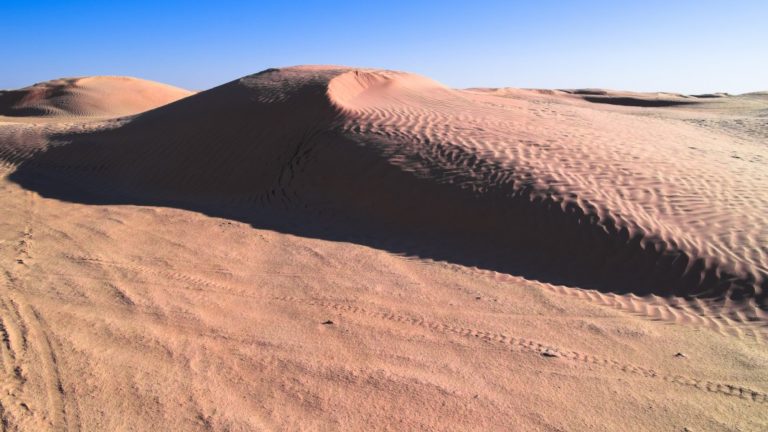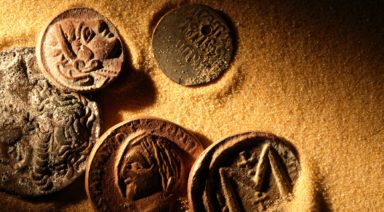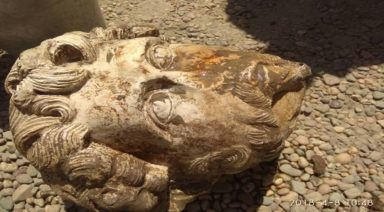Uncovering the Ancient City of Eridu

Depending on how much of an ancient history buff you are, there’s a good chance you’ve heard of Eridu.
This ancient city, said to be one of the oldest in the world, is located in what is today Iraq and better known as Abu Shahrein.
Today, few remnants remain of Eridu. You may wonder how such a seemingly random place was once anything of great importance. By examining Sumerian mythology, architecture, Genesis, and texts, we find a rich and intriguing picture of what it once was.
While many ancient Mesopotamian cities have unique aspects, Eridu’s purported definition of “guidance place” makes it particularly noteworthy.
However, given the large structures found therein, as well as its perceived importance among other ancient cities of the time, the definition of “mighty place” might be the most appropriate for the ancient city of Eridu.
Ancient Sumerian City
According to Sumerian mythology, Eridu is said to have been one of the oldest cities in Mesopotamia. It was believed this ancient location was created by the god Enki, also known as Ea, or the god of wisdom.
In Sumerian mythology, Eridu is allegedly one of the five cities built in this region before the Deluge, or Great Flood, occurred and is still argued by many to be one of the oldest cities in the world.
Eridu is also listed as the city of the first kings in the Sumerian King List.
Temples of Eridu
Excavations of the Eridu site in the last couple of centuries offered more insight into additional layers of the city, perhaps most prominently its architectural structures.
For example, during excavations of Eridu on Mound 1, 18 successive levels of mud-brick temple architecture were uncovered. Eridu’s claim to fame when it comes to architecture is most likely its temples, also known as ziggurats.
These grand structures had the form of a terrace-step pyramid, with successively receding levels. Each ziggurat was part of a larger temple complex, which included other buildings. Inside, they often consisted of a small room and offering table.
This temple of Enki in Eridu also contained a holy tree in a holy grove, which was the central point for the king to perform various rites, as he was known as a “master gardener.”
Because Eridu’s ziggurat ruins are older and larger than any others, some believe these ziggurats are those mentioned in the Bible when referencing the Tower of Babel. The Tower of Babel was said to have been created not for the worship and praise of a God, but to glorify the builders of the temple itself.
Eridu Genesis
Beyond the architecture of Eridu, much of what is known about its beginnings come from the Eridu Genesis, a Sumerian text written on a cuneiform tablet. Unfortunately, two-thirds of the content in these tablets has been lost. However, much of these parts can be reconstructed by using other texts.
The Eridu Genesis texts cover many topics, most notably the creation of man, first cities, building of the ark, the Great Flood, etc. Many such items directly correspond with similar accounts referenced in other texts of the time, such as the Bible.
For example, within the Eridu Genesis, it states the gods created mankind to farm, herd, and worship them. According to its account, Ziusudra from Eridu was instructed by Enki to build a boat to survive the Deluge or Great Flood.
This account largely mirrors that of the Bible, which credits Noah with the creation of the ark for similar purposes.
Incantation of Eridu
Other texts linked to Eridu connect it more closely to Sumerian magic and myths.
These writings, in particular, the Incantation of Eridu, were believed to compel the gods in the name of Marduk, a significant deity of Mesopotamian religion, which began a larger system of magical hierarchies. This incantation has been credited with the source of power for Mardukite magic.
Some of what is known about such magic has been gained from these ‘spiritual’ or ‘magical’ cuneiform texts. According to studies of Mesopotamian magic, priests learned prayers such as the Incantation of Eridu to compel the gods in the name of Marduk.
Through such structures used by those practicing Mesopotamian magic, it is said magical hierarchies were created.
Certain such powers were said to have been sealed in Eridu, such as petitions to assume god-form, wherein the individual would continue a ceremony or proceeding, acting as a divine representation of the God ‘invoked.’ This practice has similarities with other religious practices, such as in a Catholic priest taking on a Christ form in imitating and reenacting the Last Supper.
Eridu: City of Mythology and Magic
Many ancient Mesopotamian cities have intriguing aspects about them, and Eridu is certainly no exception. Thanks to its ties to Sumerian mythology and magic, Eridu is a fascinating city to explore through further research. Although the Eridu of today is largely sand dunes, remnants of what the complex city might have been in the past suggest it was indeed, a mighty place.
Its old age alone sets it apart from similar Mesopotamian cities. In addition, the Temple of Eridu, Eridu Genesis, and Incantation of Eridu are all remnants of this city’s history that seems to invite more research and interest, as they connect the Sumerian faith with other religions still practiced today.
Want more like this article?
Don’t miss Ancient Civilizations on Gaia to journey through humanity’s suppressed origins and examine the secret code left behind by our ancestors.
Were the Mayans Visited By Ancient Alien Gods?

The ancient Mayan civilization of Central America has astounded archeologists and researchers for decades and it seems that more and more puzzling discoveries related to this ancient culture continue to be made. These were people who were obsessed with astronomy, boasting a highly advanced calendar that is still accurate to this day. But were the Mayans gods who imbued the ancient civilization with their advanced knowledge actually ancient alien gods?
Were the Ancient Gods Aliens?
There were a couple of names for a feathered serpent-like god in the Mayan pantheon who descended from the heavens and taught these ancient people about astronomy, architecture, and construction, among other things. Known as Quetzalcoatl in the Nahuatl language, or Kukulkan in Mayan, this entity was highly revered and, upon his departure, told the Mayans that he would one day return to Earth. This date was calculated as of December 21st, 2012, which caused a lot of excitement and fear leading up to the day that many assumed could be the apocalypse.
While this prophecy apparently failed to come to fruition, Erich von Däniken says he believes that this date was calculated based on our Judeo-Christian calendar, which is somewhat ambiguous in its relation to the birth of Christ. Von Däniken says that there are, more or less, 20 years around the day that we think Christ was born, distorting our prediction of the return of Quetzalcoatl. This means that we still have 15 years to see whether the Mayan prediction will actually come true.




































